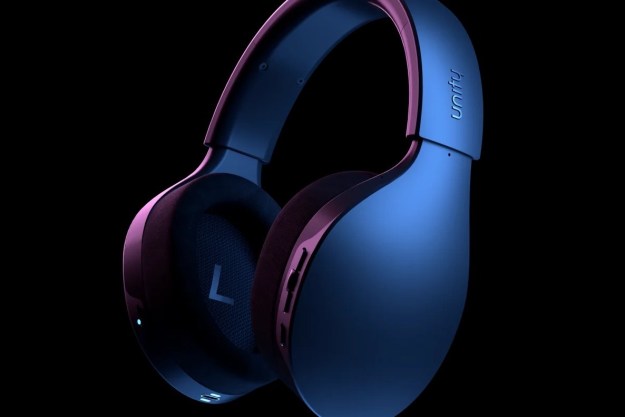Hi-resolution audio might not take off until Apple gives it permission, but that isn’t stopping the rest of the music and electronics industries from pushing forward with it anyway. Never has this been more evident than at the IFA 2015 show in Berlin, where nearly every major electronics company put hi-res audio on prominent display in one way or another.
If you weren’t aware that hi-res audio is a thing, don’t feel bad. You’re not alone. The evolution of digital music that is now officially recognized as hi-res audio (because the industry says so, that’s why) is a relatively recent phenomenon, and although nearly every major manufacturer is all-in, the movement faces a seriously steep uphill battle to attain broad awareness with consumers.
Several things stand in the way: the popularity of streaming music services, Apple’s reluctance to play ball, and a concept that doesn’t resonate with consumers. What is hi-res audio supposed to mean, anyway?
Hi-res video is a fairly easy concept to grasp: There’s standard resolution video, which looks okay — you can make out what is happening in the picture — and then there’s high resolution video, which looks considerably clearer and more detailed. The difference is apparent. And you can understand why because you can see pixels and count more of them. More pixels = a better picture. Simple, right?
Hi-res audio is more confusing. Analogies likening frame rates and pixel density in video to bit rates and bit depth in audio don’t resonate well with people, due in no small part to the fact that it’s hard to visualize these measurements. The issue is compounded by the fact that A/B comparisons between compressed audio and and hi-res audio can’t be made easily. To do it you need the right kind of equipment, the same music file in two different formats, and a simple way to switch between the two. Most folks can’t do this at home.
Sony is setting up stations that make it easier for people to understand what hi-res audio is.
Perhaps that’s why Sony is leading the charge to educate consumers about the hi-res audio experience. As seen in our video, Sony is setting up stations at trade shows and in retail locations that make it easier for people to understand what hi-res audio is all about — and experience it themselves. The stations use a combination of visual graphics and listening experience to hammer the point home. The hi-res audio education stations are effective at showing how premium playback devices and headphones can deliver an amazing music listening experience.
Other manufacturers like Sennheiser and Beyerdynamic are doing their part by setting up hi-res audio listening stations, and companies like Philips, Onkyo, and TEAC offer outstanding hi-res audio listening gear. But can this tactic of education and exposure combined with a saturation of new equipment sell a generation that’s sold on streaming?
Streaming music services are a massive roadblock on the highway to widespread adoption. Currently high-res audio tracks must be purchased and downloaded, but digital music sales are down — way down — and it’s because streaming is so convenient an easy. The harsh reality is: Until Spotify and Apple Music start offering hi-res, it’s a good bet the format won’t take off.
The music industry doesn’t see it that way, though. Sony, Warner, and Universal — the big three music rights owners — are leveraging their industry clout to make hi-res audio happen come hell or high water.
It will be interesting to see where digital music goes in the coming year, and whether consumers will accept a change, or if they’ll be muscled into it by the music industry.
Editors' Recommendations
- Next-gen wireless headphones will get lossless hi-res audio with a little help from Qualcomm
- Audio-Technica’s latest hi-res earbuds debut at CES 2024 for $199
- Tidal will finally let you see which hi-res tracks are FLAC versus MQA
- Tidal begins its rollout of hi-res lossless audio
- Bluetooth bandwidth set to double, opening a path for video and lossless audio





